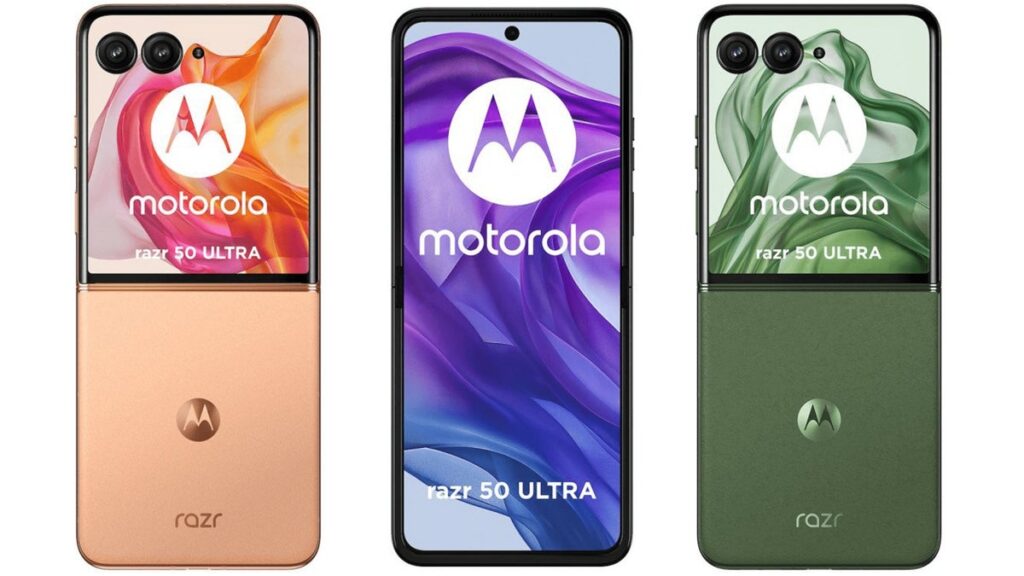Motorola has introduced two new flip phones: the Razr 50 (Razr 2024 in the US) and the Razr 50 Ultra (Razr Plus 2024 in the US). We had the chance to explore the flagship Razr 50 Ultra, testing its camera and oversized cover screen ahead of our comprehensive review.
Pricing and Market Position
The new flip phones from Motorola come with premium price tags. The Razr 50 is priced at £799 (approximately $1010 and AU$1495), while the Razr 50 Ultra costs £999 (approximately $1265 and AU$1870). This reflects the increasing affordability of flexible screens as they become more mainstream.
Enlarged Cover Screens
The standout feature of both models is the significantly larger cover screens. The Razr 50 Ultra boasts a 4-inch cover screen, surpassing the 3.5-inch screen of the original iPhone. This enhancement gives the phone a futuristic look as the entire front lights up when activated.
Enhanced Specifications
The Razr 50 Ultra is equipped with the latest Qualcomm Snapdragon 8s Gen 3 processor and Google Gemini AI, ensuring it is well-prepared for future technological advancements. The camera system has also been upgraded to a dual-50MP setup, featuring a wide and a telephoto lens.
Camera Performance
Flip phones traditionally face challenges in matching the camera quality of conventional smartphones due to space constraints. The Razr 50 Ultra, like other flip phones, makes some compromises in this area. However, the camera system is still a significant improvement over last year’s Razr 40 Ultra. It includes a primary 50MP sensor, likely the Samsung GN8 ISOCELL sensor, and a 2x telephoto camera with another 50MP sensor, probably the Samsung ISOCELL JN1. While the latter lacks Optical Image Stabilization (OIS), it features a relatively fast f/2.0 aperture.
Both cover cameras double as selfie cameras, thanks to the flip phone design. Additionally, there is a 32MP punch-hole selfie camera inside the phone for use when it is open.
Video Capabilities and Additional Features
The Razr 50 Ultra supports various shooting modes, including part-folded configurations for steady long-exposure shots or camcorder-style video recording. The phone also records 4K video at up to 60fps and supports HDR video.
Design and Durability
The Razr 50 Ultra continues the stylish design of its predecessor, the Razr 40 Ultra. The larger cover screen adds to its aesthetic appeal, and the phone is available in several colors, including Spring Green, Midnight Blue, Peach Fuzz, and Hot Pink. The device is also IPX8 water-resistant, featuring a Gorilla Glass Victus front and a high-strength aluminum frame.
Display and Battery
When opened, the Razr 50 Ultra reveals a tall 6.9-inch pOLED display with a peak brightness of up to 3000 nits for HDR content and a refresh rate of up to 165Hz. This quality extends to the cover screen, which also features a 165Hz refresh rate. Despite its dual-screen and hinge design, the phone is lightweight at 189g. However, the battery capacity is modest at 4000mAh, though it supports 45W fast charging and comes with a 68W charging brick.
User Experience and Performance
Motorola has incorporated several user-friendly features into the cover screen, such as tent mode for use as a desk clock and familiar gestures like wrist twists to activate the camera and double flick to launch the torch. The Razr 50 Ultra is powered by the Qualcomm Snapdragon 8s Gen 3 chipset, paired with 12GB of RAM and 512GB of storage, ensuring smooth performance for gaming and multitasking.
Conclusion
Overall, the Razr 50 Ultra combines style and functionality, making it a strong contender in the foldable phone market. With its dual 50MP camera system and enhanced features, it will be interesting to see how it competes with other foldable camera phones. Stay tuned for our full review, and in the meantime, check out our guide to the best foldable camera phones to see how the Razr 50 Ultra stacks up against its rivals.
